Histamine-2 (H2) receptor antagonists block the release of acid in response to gastrin or parasympathetic release.
Histamine-2 Antagonist: Generic and Brand Names
Here is a table of the most commonly used H2 antagonists.
- Histamine-2 antagonists (ends in -tidine)
- cimetidine (Tagamet)
- ranitidine (Zantac)
- famotidine (Pepcid)
- nizatidine (Axid)
Description
Histamine-2 antagonists block the release of hydrochloric acid in response to gastrin.
- These drugs include cimetidine (Tagamet), ranitidine (Zantac), famotidine (Pepcid), and nizatidine (Axid).
Therapeutic actions
The desired actions of H2 antagonists include the following:
- Selectively block H2 receptors located on the parietal cells.
- Prevents the release of gastrin, a hormone that causes local release of histamine (due to stimulation of histamine receptors), ultimately blocking the production of hydrochloric acid.
- Decreases pepsin production by the chief cells.
Indication
Histamine-2 antagonists are indicated for the following:
- Short-term treatment of active duodenal ulcer or benign gastric ulcer.
- Treatment of pathological hypersecretory conditions such as Zollinger-Ellison syndrome (blocking the overproduction of hydrochloric acid that is associated with these conditions).
- Prophylaxis of stress-induced ulcers and acute upper GI bleeding in critical patients (blocking the production of acid protects the stomach lining, which is at risk because of decreased mucus production associated with extreme stress).
- Treatment of erosive gastroesophageal reflux (decreasing the acid being regurgitated into the esophagus will promote healing and decrease pain).
- Relief of symptoms of heartburn, acid indigestion, and sour stomach.
Pharmacokinetics
Cimetidine, ranitidine, and famotidine are available in oral and parenteral forms
Contraindications and Cautions
The contraindications and cautions when using H2 antagonists include:
- Allergy. The H2 antagonists should not be used with known allergy to any drugs of this class to prevent hypersensitivity reactions.
- Pregnancy or lactation. Caution should be used during pregnancy or lactation because of the potential for adverse effects on the fetus or nursing baby.
- Hepatic or renal dysfunction. Caution should be used in patients with hepatic or renal dysfunction, which could interfere with drug metabolism and excretion.
- Prolonged or continual use. Care should also be taken if prolonged or continual use of these drugs is necessary because they may be masking serious underlying conditions.
Adverse effects
The adverse effects associated with H2 antagonists are:
- CNS: Dizziness, confusion, headache, somnolence.
- Cardio: Cardiac arrhythmias, cardiac arrest.
- GI: Diarrhea.
- Reproductive: Impotence.
- Skin: Rash.
- Misc: Gynecomastia.
Interactions
Cimetidine, famotidine, and ranitidine can slow down the metabolism of the following drugs, leading to increased serum levels and possible toxic reactions:
- Warfarin.
- Anti-coagulants.
- Phenytoin.
- Beta-adrenergic blockers.
- Alcohol.
- Quinidine.
- Lidocaine.
- Theophylline.
- Chloroquine.
- Benzodiazepines.
- Nifedipine.
- Pentoxifylline.
- TCAs.
- Procainamide.
- Carbamazepine.
Nursing Considerations
Nursing considerations for a patient using H2 antagonists include the following:
Nursing Assessment
Nursing assessment for a patient using H2 antagonists include:
- Assess for possible contraindications and cautions: history of allergy to any H2 antagonists to prevent potential allergic reactions; impaired renal or hepatic function, which could affect the metabolism and excretion of the drug; a detailed description of the GI problem, including length of time of the disorder and medical evaluation to evaluate the appropriate use of the drug and possibility of underlying medical problems; and current status of pregnancy and lactation because of the potential for adverse effects on the fetus or newborn.
- Perform a physical examination to establish baseline data before beginning therapy, determine effectiveness of the therapy, and evaluate for any adverse effects associated with drug therapy.
- Inspect the skin for evidence of lesions or rash to monitor for adverse reactions.
- Evaluate neurological status, including orientation and affect, to assess CNS effects of the drug and to plan for protective measures.
- Assess cardiopulmonary status, including pulse, blood pressure, and electrocardiogram (if IV use is needed), to evaluate the cardiac effects of the drug.
- Perform abdominal examination, including assessment of the liver, to establish a baseline and rule out underlying medical problem.
- Monitor the results of laboratory tests, including liver and renal function tests, to predict changes in metabolism or excretion of the drug that might require dose adjustment.
Nursing Diagnosis
Nursing diagnosis related to the drug therapy might include the following:
- Acute pain related to CNS and GI effects.
- Disturbed sensory perception (kinesthetic, auditory) related to CNS effects.
- Decreased cardiac output related to cardiac arrhythmias.
- Risk for injury related to CNS effects.
- Deficient knowledge regarding drug therapy.
Nursing Care Plans and Interventions
Nursing interventions for patients using H2 antagonists include:
- Ensure therapeutic levels. Administer drug with or before meals and at bedtime (exact timing varies with product) to ensure therapeutic levels when the drug is most needed.
- Prevent serious toxicity. Arrange for decreased dose in cases of hepatic or renal dysfunction to prevent serious toxicity.
- Monitor IV doses carefully. Monitor the patient continually if giving IV doses to allow early detection of potentially serious adverse effects, including cardiac arrhythmias
- Assess for potential drug-drug interactions. Assess the patient carefully for any potential drug-drug interactions if given in combination with other drugs because of the drugs effects on liver enzyme systems.
- Provide patient’s comfort. Provide comfort, including analgesics, ready to access bathroom facilities, and assistance with ambulation, to minimize possible adverse effects.
- Reorient patient thoroughly. Periodically reorient the patient and institute safety measures if CNS effects occur to ensure patient safety and improve and improve patient tolerance of the drug and drug effects.
- Attend regular follow-ups. Arrange for regular follow-up to evaluate drug effects and the underlying problems.
- Provide support. Offer support and encouragement to help patients cope with the disease and the drug regimen.
- Educate the client. Provide patient teaching regarding drug name, dosage, and schedule for administration; importance of spacing administration appropriately as ordered; need for readily available access to bathroom; signs and symptoms of adverse effects and measures to minimize or prevent them.
Evaluation
Evaluation of a patient using H2 antagonists include:
- Monitor patient response to the drug (relief of GI symptoms, ulcer healing, prevention of progression of ulcer).
- Monitor for adverse effects (dizziness, confusion, hallucinations, GI alterations, cardiac arrhythmias, hypotension, gynecomastia).
- Evaluate the effectiveness of the teaching plan (patient can name drug, dosage, adverse effects to watch for, and specific measures to avoid them).
- Monitor the effectiveness of comfort measures and compliance with the regimen.
Recommended Resources
Our recommended nursing pharmacology resources and books:
Disclosure: Included below are affiliate links from Amazon at no additional cost from you. We may earn a small commission from your purchase which will help support us. Thank you! For more information, check out our privacy policy.
Pharm Phlash! Pharmacology Flash Cards #1 BEST SELLER!
Test-yourself review cards put critical clinical information for nearly 400 of the top generic medications at your fingertips. And, you can count on them for accuracy, because each card is based on content from Davis’s Drug Guide for Nurses. Increase your test scores in pharmacology class.
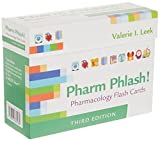
Focus on Pharmacology (8th Edition)
Focus on Nursing Pharmacology makes challenging concepts more approachable. Engaging learning features cultivate your clinical application, critical thinking and patient education capabilities. This updated 8th edition builds on your knowledge of physiology, chemistry and nursing fundamentals to help you conceptualize need-to-know information about each group of drugs.

Pharmacology Made Incredibly Easy (Incredibly Easy! Series®)
Nursing pharmacology guide offers step-by-step guidance so you can grasp the fundamentals in enjoyable Incredibly Easy style. This is the perfect supplement to class materials, offering solid preparation for NCLEX® as well as a handy refresher for experienced nurses. Colorfully illustrated chapters offer clear, concise descriptions of crucial nursing pharmacology concepts and procedures.

Lehne’s Pharmacology for Nursing Care (11th Edition)
The Eleventh Edition of Lehne’s Pharmacology for Nursing Care provides a thorough understanding of key drugs and their implications for nursing care. This text, written by renowned nursing educators, helps you comprehend and apply pharmacology principles. A clear and engaging writing style simplifies complex concepts, making even the most challenging pharmacology content enjoyable. We recommend this book if you want a comprehensive nursing pharmacology guide.
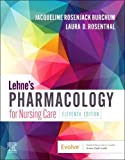
Nursing Drug Handbook
Nursing2023 Drug Handbook delivers evidence-based, nursing-focused drug monographs for nearly 3700 generic, brand-name, and combination drugs. With a tabbed, alphabetical organization and a “New Drugs” section, NDH2023 makes it easy to check drug facts on the spot.

Pharmacology and the Nursing Process
The 10th edition of Pharmacology and the Nursing Process offers practical, user-friendly pharmacology information. The photo atlas contains over 100 unique illustrations and photographs depicting drug administration techniques. Updated drug content reflects the most recent FDA drug approvals, withdrawals, and therapeutic uses.

Mosby’s Pharmacology Memory NoteCards: Visual, Mnemonic, and Memory Aids for Nurses
The 6th edition of Mosby’s Pharmacology Memory NoteCards: Visual, Mnemonic, & Memory Aids for Nurses incorporates illustrations and humor to make studying easier and more enjoyable. This unique pharmacology review can be utilized as a spiral-bound notebook or as individual flashcards, making it ideal for mobile study.

See Also
Here are other nursing pharmacology study guides:
- Nursing Pharmacology – Study Guide for Nurses
Our collection of topics related to nursing pharmacology - Pharmacology Nursing Mnemonics & Tips
These nursing mnemonics aim to simplify the concepts of pharmacology through the use of a simple, concise guide. - Generic Drug Name Stems Cheat Sheet
Learn about these generic drug name stems to help you make sense of drugs easier! - Common Drugs and Their Antidotes
A guide to drug antidotes that nurses should be familiar about. - IV Fluids and Solutions Guide & Cheat Sheet
Get to know the different types of intravenous solutions or IV fluids in this guide and cheat sheet. - Drug Dosage Calculations NCLEX Practice Questions (100+ Items)
Care to take the challenge? This quiz aims to help students and registered nurses alike grasp and master the concepts of medication calculation.
We have a pill for that…
Drug Guides NEW!
Individual drug guides and nursing considerations for the most common medications used in nursing pharmacology:
- Acetaminophen (Tylenol)
- Aspirin
- Atorvastatin (Lipitor)
- Enoxaparin (Lovenox)
- Furosemide (Lasix)
- Gabapentin
- Hydromorphone (Dilaudid)
- Lisinopril
- Metoprolol
- Morphine
Gastrointestinal System Drugs
Respiratory System Drugs
- Antihistamines
- Bronchodilators and Antiasthmatics
- Decongestants
- Expectorants and Mucolytics
- Inhaled Steroids
- Lung Surfactants
Endocrine System Drugs
- Adrenocortical Agents
- Antidiabetic Agents
- Glucose-Elevating Agents
- Hypothalamic Agents
- Insulin
- Parathyroid Agents: Bisphosphonates, Calcitonins
- Pituitary Drugs
- Sulfonylureas
- Thyroid Agents
Autonomic Nervous System Drugs
- Adrenergic Agonists (Sympathomimetics)
- Adrenergic Antagonists (Sympatholytics)
- Anticholinergics (Parasympatholytics)
- Cholinergic Agonists (Parasympathomimetics)
Immune System Drugs
Chemotherapeutic Agents
- Anthelmintics
- Anti-Infective Drugs
- Antibiotics
- Antifungals
- Antineoplastic Agents
- Antiprotozoal Drugs
- Antiviral Drugs
Reproductive System Drugs
Nervous System Drugs
- Antidepressants
- Antiparkinsonism Drugs
- Antiseizure Drugs
- Anxiolytics and Hypnotic Drugs
- General and Local Anesthetics
- Muscle Relaxants
- Narcotics, Narcotic Agonists, and Antimigraine Agents
- Neuromuscular Junction Blocking Agents
- Psychotherapeutic Drugs
Cardiovascular System Drugs
References
Suggested reading and references for this Histamine 2 Receptor Antagonist Nursing Pharmacology Guide:
- Lam, J. R., Schneider, J. L., Zhao, W., & Corley, D. A. (2013). Proton pump inhibitor and histamine 2 receptor antagonist use and vitamin B12 deficiency. Jama, 310(22), 2435-2442. [Link]
- Karch, A. M., & Karch. (2011). Focus on nursing pharmacology. Wolters Kluwer Health/Lippincott Williams & Wilkins. [Link]
- Katzung, B. G. (2017). Basic and clinical pharmacology. McGraw-Hill Education.
- Lehne, R. A., Moore, L. A., Crosby, L. J., & Hamilton, D. B. (2004). Pharmacology for nursing care.
- Smeltzer, S. C., & Bare, B. G. (1992). Brunner & Suddarth’s textbook of medical-surgical nursing. Philadelphia: JB Lippincott.





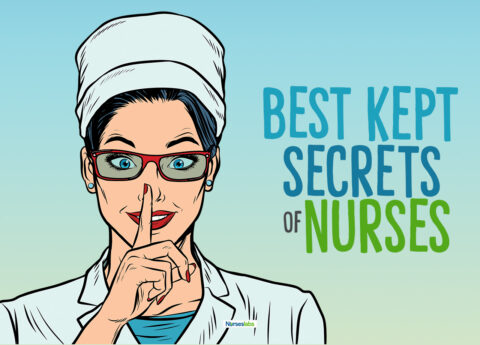




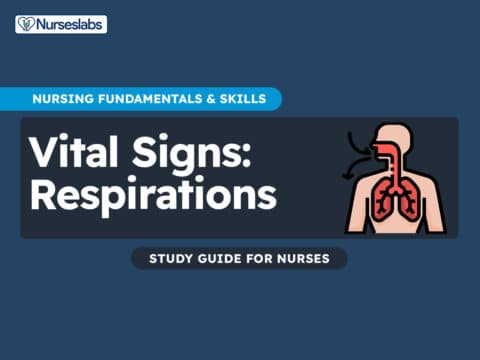













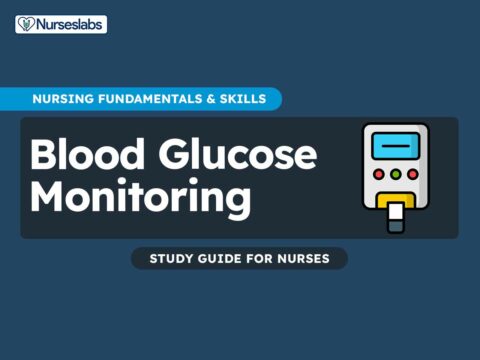













Leave a Comment